
© 2010-2024 by Fine Arts of the Southwest, Inc. All rights reserved.
Unauthorized reproduction or use is strictly prohibited by law.
An extraordinarily beautiful and very finely-made contemporary Hopi pottery “seed” jar by Jacob Myron Koopee, Jr., c. 2000’s
A most worthy heir to a most brilliant multi-generational Nampeyo family dynasty of distinguished Hopi potters was the late Jacob Myron Koopee Nampeyo Jr. (1970-2011). Jake was the Great-Great Grandson of the now world-renowned Hopi pottery matriarch, Nampeyo of Hano (1858-1942) and the Great-Grandson of her second daughter, Nellie Nampeyo (1896-1978). A unique artistic brilliance such as his shows up only rarely even in such a distinguished family lineage.
We would liken his work’s unique freshness, boldness and artistic originality to that of his talented Aunt and pottery teacher, Nampeyo’s Great-Granddaughter, Dextra Quotskuyva Nampeyo (1928-2019) who Jake counted as one of his primary artistic influences and inspirations. Like Dextra, through his singular artistic vision, Jake took the richness of his thousand-plus year old Hopi ceramic tradition and turned it into something completely original, completely modern, completely and uniquely his own. Over the course of his tragically all-too-short career, Jake received numerous important awards for his pottery creations, first and foremost among these was a coveted “Best of Show” in 2005 at the Santa Fe Indian Market and also earned the same award in the same year at the prestigious Heard Museum Indian Fair in Phoenix.
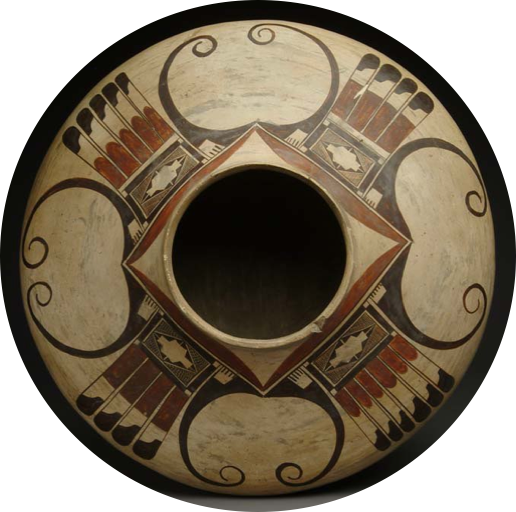
This jar is most beautifully formed with fine, thin walls and a beautiful swooping low-profile “Flying Saucer” style
shape drawn from ancient Hopi Sikyatki-Period pottery (1375-1625 A.D.) in the same manner in which Nampeyo herself
four generations earlier in the late 19th Century had helped spur the so called “Sikyatki Revival” the re-discovery
and re-creation and creative re-interpretation of the ancient pottery forms and methods at Hopi.
Taking a cue from this ancient tradition, Jake made and painted this Eagletail jar not just in three colors, and not in
four but in five so he did the Sikytayki four-color tradition of using kaolin white paint as the fourth color, as seen in
the photo above, one color better. The “eagle-tail” composition shown here is Jake’s own original de-constructed modern version based on Nampeyo’s original interpretation of the Sikyatki design element. Nampeyo used the curved eagletails in matched pairs turning them towards each other or away as can be seen in the jar below. Koopee turned this idea on its side so to speak and depicted the eight eagle tails in four colors all next to each other in a parallel encircling row all the way around the top of the jar.
True to his Great-Great Grandmother’s design inspiration, though, he presented these eight eagle tails in four horizontally-opposed pairs, each pair defined by its own particular color, the black, dark red, light red and Kaolin white. A distinct nod to the past and an equally distinct pointing to the present and future. It’s nothing less than pure, inspired artistic genius if you ask us! The design field is all contained within a single thin black painted encircling “framing” line around the exact outer shoulder of the jar. This perfectly drawn line is just slightly off center and
via aries slightly in its vertical aspect as it encircles around the jar, it is a charming slightly irregularly intentional finishing touch to the near-perfect symmetry of the primary painted eagle tail design. The overall quality of the painting and the all-over stone polishing of the vessel are simply superb. There is a beautiful sense of lightness, softness and
a delicate strength being conveyed here.
At left, Nampeyo of Hano c. 1901, at center, Jake Koopee c. 2005, at right, Nellie Nampeyo c. 1972.
Nampeyo photo "Nampeyo, potter of Hano with some of her wares" by A.C. Vroman, 1901. Photo source and © The Southwest Museum, Los Angeles. Photo # N.30,539. Center photo source and © Plastic Alto with Mark Weiss. Right photo source and © "Fourteen Families in Pueblo Pottery" by Rick Dillingham, University of New Mexico Press, 1999, pp. 58.
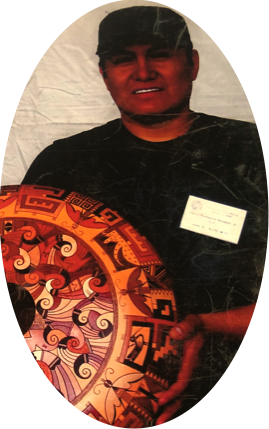
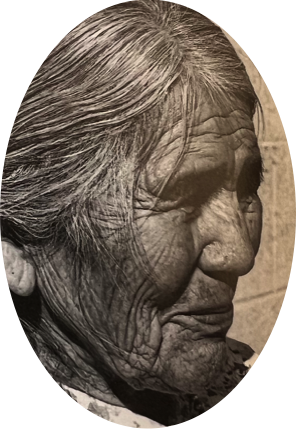
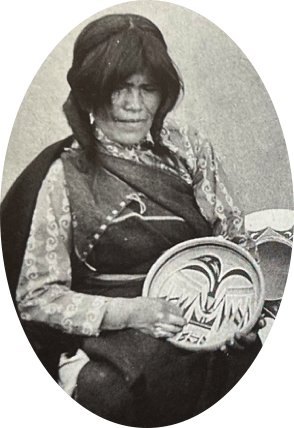
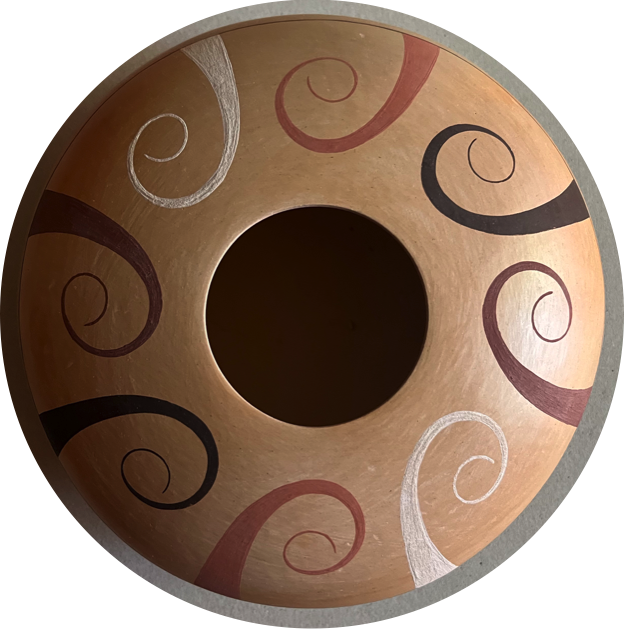
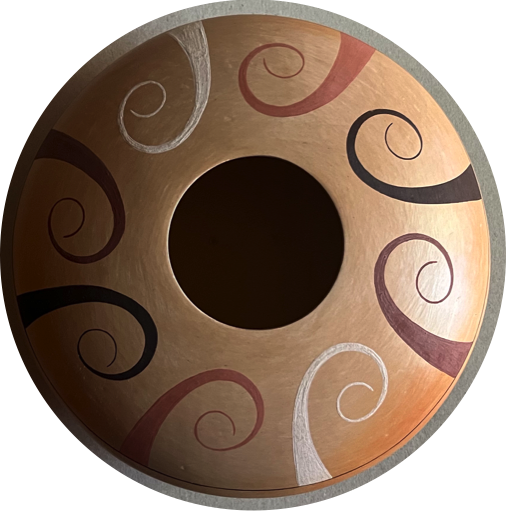
The jar measures a nice medium-sized 7 3/4" in diameter and it is a low profile 3 1/2" in height. It is in remarkably
excellent original condition. There is a very tiny scuff or abrasion or two if you examine it under a magnifying glass,
but it essentially looks as if it were made yesterday. The jar is properly signed on the bottom with Jake Koopees’s Kokopelli hallmark which is slightly abraded.
Almost fifteen years after his untimely death, Jacob Koopee Jr.’s pottery is somewhat rare and somewhat difficult
to find today, due primarily to his short life span and also the extremely time-consuming nature of his very fine and highly-detailed work. This jar is an outstanding example of this unique and distinguished body of work, encompassing
both a rich and storied past with a vibrant, visionary and completely energetic present and future.
Price $3,950
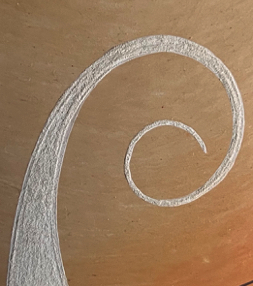
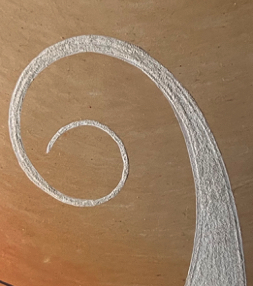
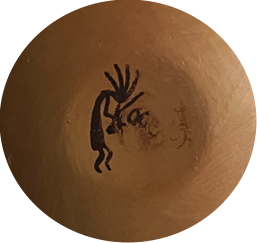
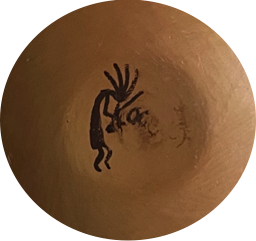
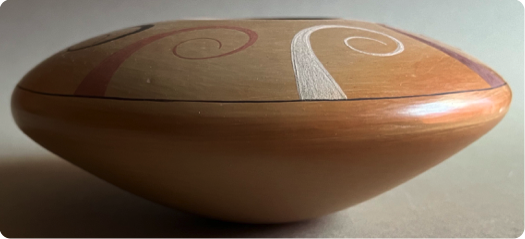
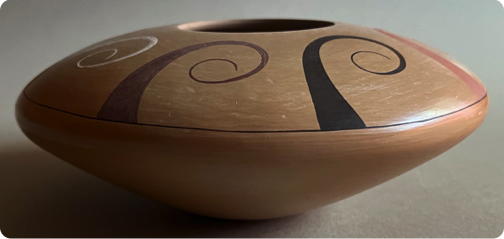
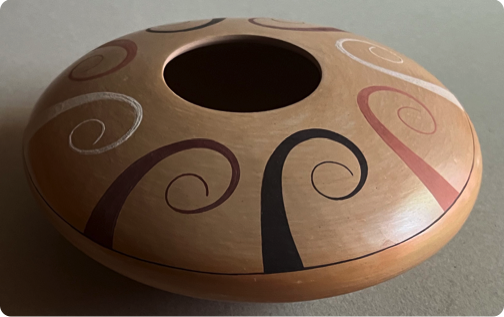
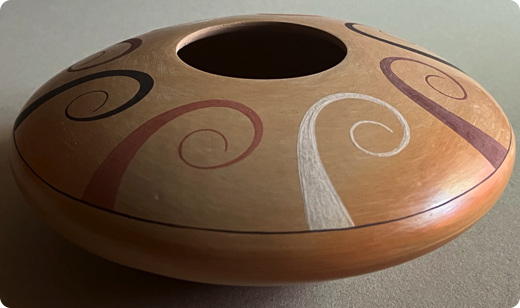
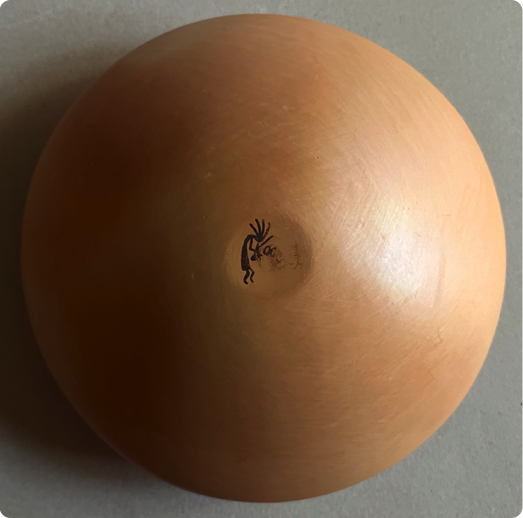
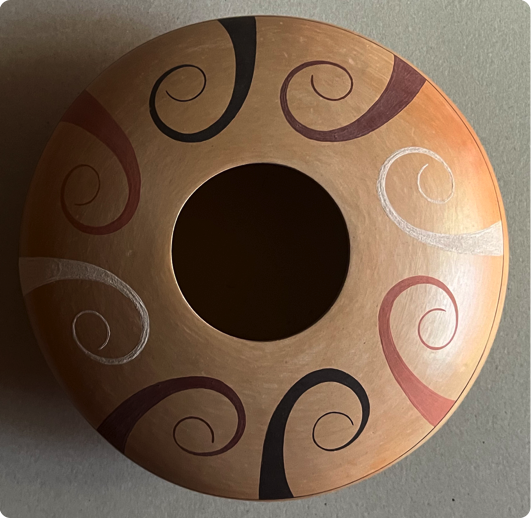
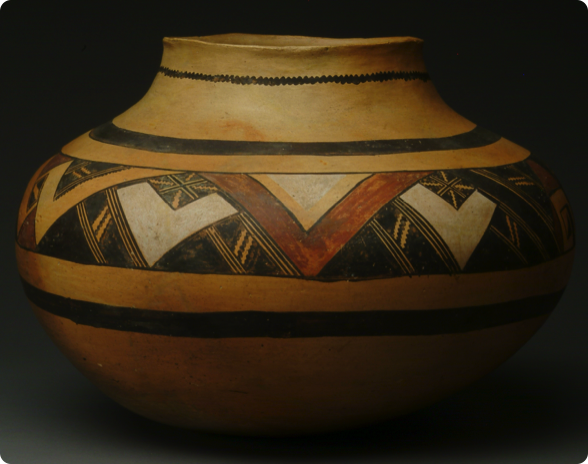
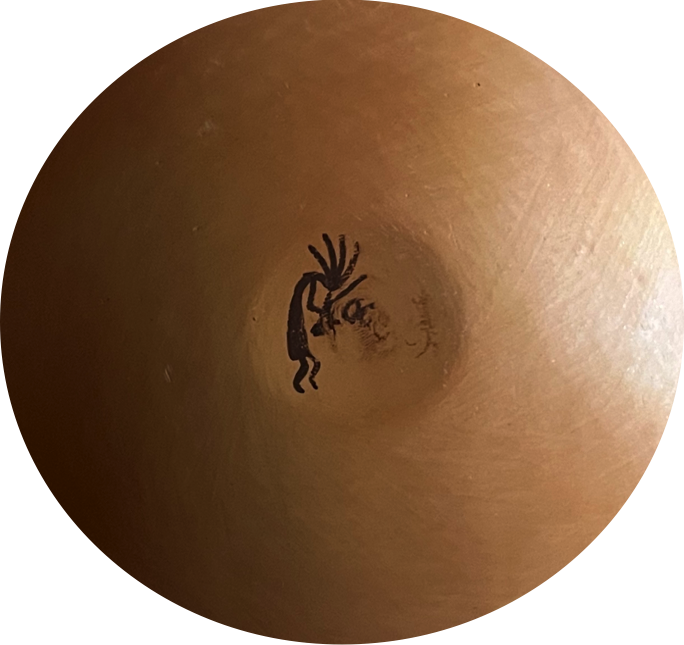
A Sikyatki Four-Color Polychrome pottery jar with Kaolin white paint, c. 1450 A.D.
Photo by Addison Doty, Santa Fe
At right, a large low-profile jar with "eagletail" designs by Nampeyo, c. 1900 in the collection of The Art Institute of Chicago.
Photo by Addison Doty, Santa Fe courtesy of and © Fine Arts of the Southwest, Inc.
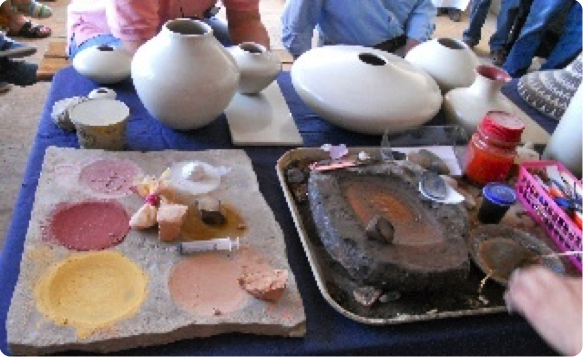
Hand ground natural pigments to be used as paints in Jake Koopee's pottery studio.
Photo source and © marthastruever.com